I have a program that's supposed to change the contrast, but I feel like it's not really changing the contrast.It changes some areas to red whereas I don't want it to. If you could tell me how to remove them, thank you. Here is the code:
from PIL import Image
def change_contrast(img, level):
img = Image.open("C:\\Users\\omar\\Desktop\\Site\\Images\\obama.png")
img.load()
factor = (259 * (level+255)) / (255 * (259-level))
for x in range(img.size[0]):
for y in range(img.size[1]):
color = img.getpixel((x, y))
new_color = tuple(int(factor * (c-128) + 128) for c in color)
img.putpixel((x, y), new_color)
return img
result = change_contrast('C:\\Users\\omar\\Desktop\\Site\\Images\\test_image1.jpg', 100)
result.save('C:\\Users\\omar\\Desktop\\Site\\Images\\test_image1_output.jpg')
print('done')
And here is the image and its result:
If this is the actual contrast method, feel free to tell me



